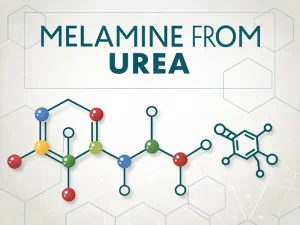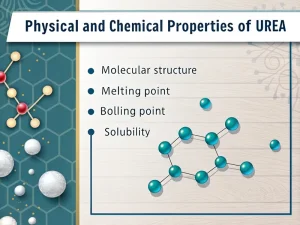
Urea VS Anhydrous Ammonia
Tech Blog urea vs anhydrous ammonia Nitrogen is the “lifeline” of crop growth, directly affecting leaf development, photosynthetic efficiency, and yield potential. For global farmers,

In the history of chemistry, few reactions have been as transformative as the conversion of ammonium cyanate to urea. This seemingly simple reaction, first demonstrated by Friedrich Wöhler in 1828, shattered the long-held “vitalism” theory—the belief that organic compounds could only be produced by living organisms. But beyond its historical significance, the mechanism behind ammonium cyanate’s transformation to urea remains a foundational concept in organic chemistry. In this article, we’ll break down the ammonium cyanate to urea mechanism, exploring the steps, conditions, and significance of this pivotal reaction.
The conversion of ammonium cyanate to urea is a classic example of an isomerization reaction—a process where a molecule rearranges its atoms to form a new structure with the same molecular formula but different connectivity.
The conversion of ammonium cyanate to urea involves a series of molecular rearrangements driven by the instability of the cyanate ion and the thermodynamic stability of urea. Here’s a step-by-step breakdown of the mechanism:
Ammonium cyanate is an ionic compound that dissociates in solution (or under heat) into its constituent ions:
In solid form, ammonium cyanate exists as a lattice of these ions. When heated (as in Wöhler’s original experiment), the ions gain energy, allowing them to move freely and interact—setting the stage for rearrangement.
The cyanate ion (OCN⁻) is a resonance-stabilized ion with two key resonance forms:
Ammonium ions (NH4+) act as proton donors. A proton (H+) from (NH4+) transfers to the nitrogen atom of the cyanate ion, stabilizing the negative charge and forming a neutral intermediate: isocyanic acid (HNCO):
Isocyanic acid is unstable and quickly undergoes tautomerization—a proton shift that rearranges its structure. The proton moves from the nitrogen atom to the oxygen atom, forming cyanic acid (HNCO):
The final step involves a reaction between ammonia—released in Step 2—and cyanic acid (HNCO). Ammonia, a nucleophile (electron-rich species), attacks the electrophilic carbonyl carbon in cyanic acid, leading to the formation of urea:
Urea is far more thermodynamically stable than ammonium cyanate due to its strong covalent bonds and resonance-stabilized structure. The carbonyl group C=O in urea and the two amino groups (-NH2) create a stable, low-energy configuration, making the isomerization irreversible under typical conditions.
Friedrich Wöhler’s original experiment relied on heating ammonium cyanate, and this remains the most common method to drive the reaction:
Before Wöhler’s experiment, chemists believed organic compounds could only be synthesized by “vital forces” in living organisms. By producing urea—a compound found in urine—from inorganic ammonium cyanate, Wöhler proved that organic molecules could be created from inorganic precursors, laying the foundation for modern organic chemistry.
Today, the industrial synthesis of urea does not rely on ammonium cyanate (it uses ammonia and carbon dioxide instead). However, the mechanism remains a model for understanding isomerization reactions, which are critical in:
The ammonium cyanate to urea mechanism is a staple in chemistry curricula, teaching students about:
The ammonium cyanate to urea mechanism is more than a chemical curiosity—it’s a landmark reaction that revolutionized chemistry. By understanding its steps—from ion dissociation to proton transfer and final rearrangement—we gain insights into the fundamental principles of isomerization, thermodynamics, and organic synthesis. Whether you’re a student, researcher, or chemistry enthusiast, this reaction remains a powerful example of how simple molecular rearrangements can drive profound scientific progress.

Tech Blog urea vs anhydrous ammonia Nitrogen is the “lifeline” of crop growth, directly affecting leaf development, photosynthetic efficiency, and yield potential. For global farmers,

Tech Blog melamine from urea Melamine is well-known for its wide range of applications, but its raw material for production is surprisingly urea. For manufacturers,

Tech Blog physical and chemical properties of urea Urea, with the chemical formula CO(NH2)2, is a simple organic compound that plays a central role in

JINGJIANG MELAMINE POWDER
© JINJIANG MELAMINE